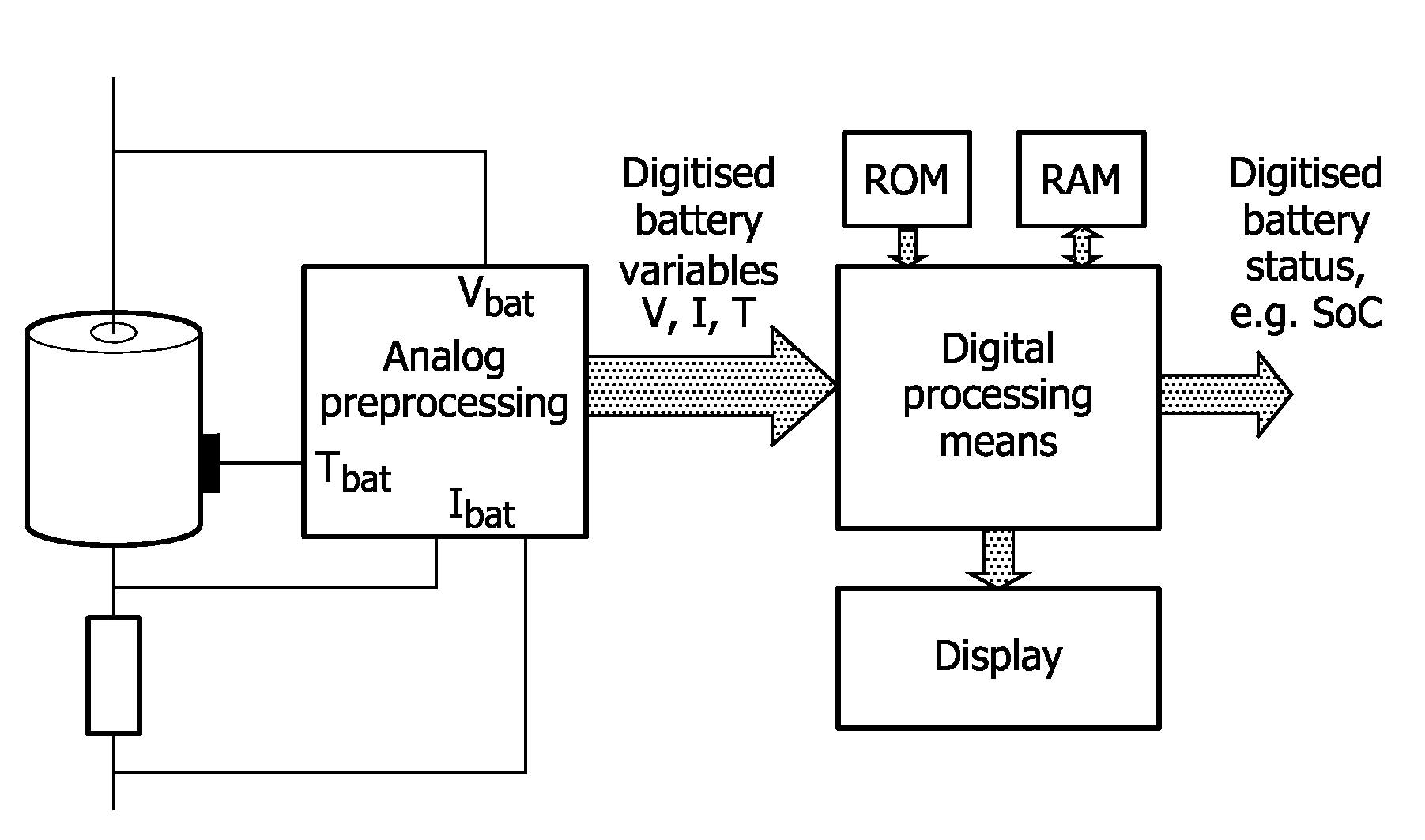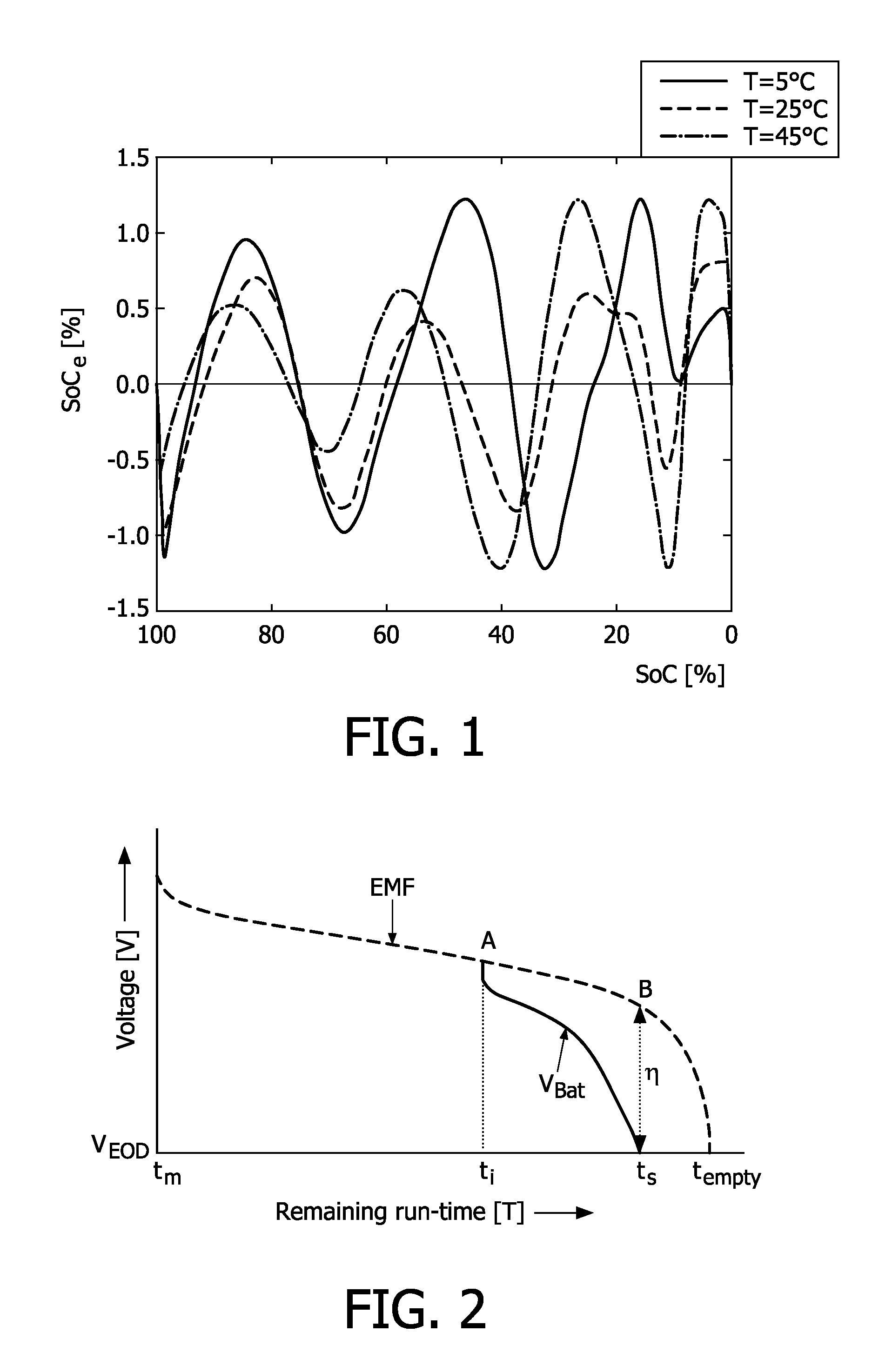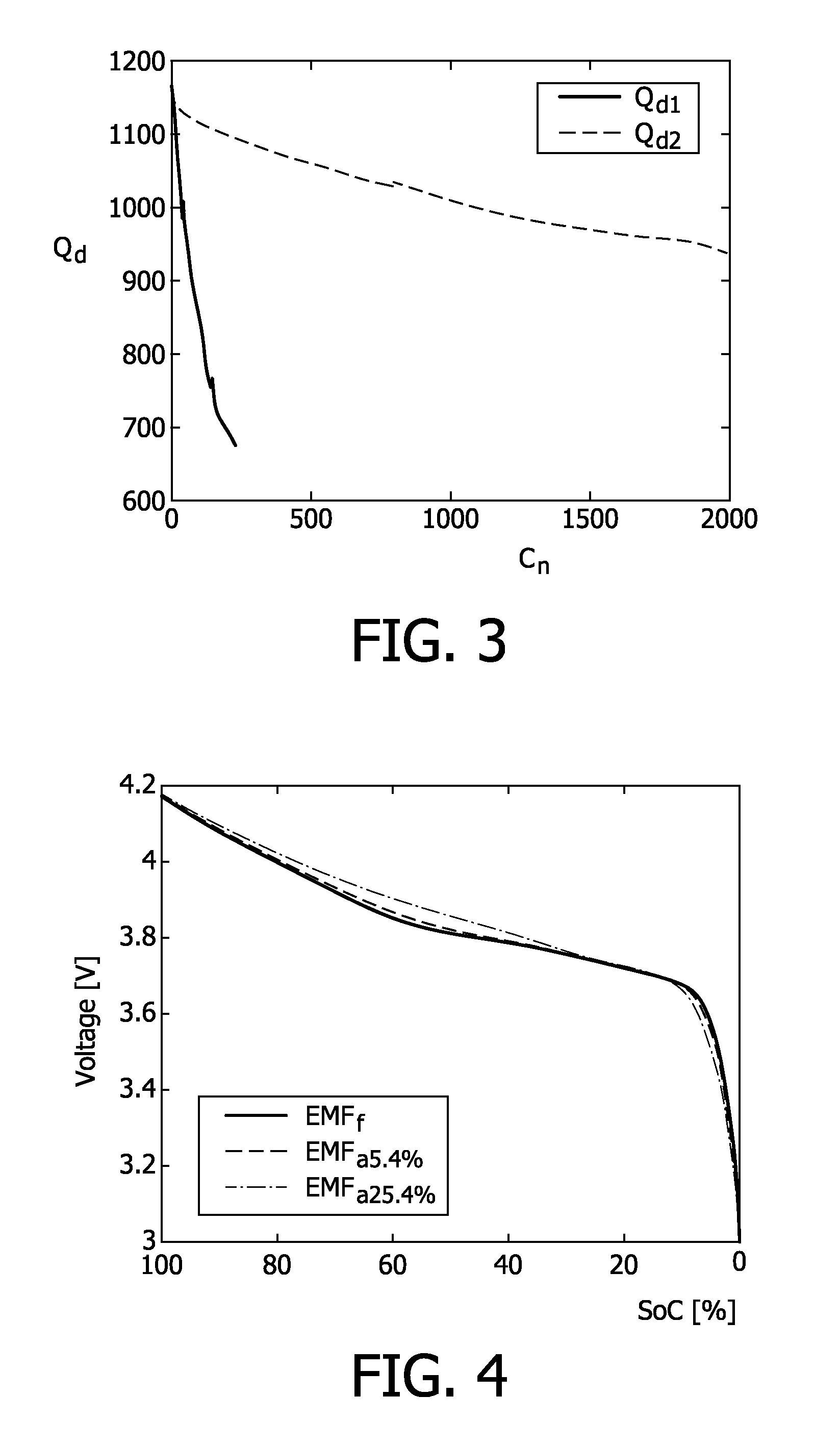Method and apparatus for determination of the state-of-charge (SOC) of a rechargeable battery
a rechargeable battery and state-of-charge technology, which is applied in the field of method for determining the state-of-charge (soc) of a rechargeable battery, can solve the problems of inability to include all relevant battery behaviour in the look-up table or function, method cannot work during external current flow or after current flow before the battery voltage has fully relaxed, etc., to achieve the effect of improving adaptability accuracy
- Summary
- Abstract
- Description
- Claims
- Application Information
AI Technical Summary
Benefits of technology
Problems solved by technology
Method used
Image
Examples
Embodiment Construction
[0078]As described in the previous sections the newly proposed SoC=f(EMF) and SoC1 models can be used advantageously in the prior SoC indication algorithm. However, it can also be used in any SoC system in which the EMF of the battery is used to determine the SoC and that indicates the remaining run-time as well.
[0079]FIG. 10 shows a general block diagram of how the SoC=f(EMF) and SoC1 methods may be implemented in an SoC indication system. The battery voltage Vbat, current Ibat and temperature Tbat are measured by means of an analog pre-processing unit, including e.g. filtering, amplification and digitisation. Digital representations of the battery variables are fed to a digital processing means, such as a micro-controller. SoC=f(EMF) and SoC1 methods as well as any SoC-indication system based on the EMF method runs on this digital processing unit. The unit also makes use of memory, which can be external memory or memory present on the same silicon die. ROM memory is used to store ...
PUM
 Login to View More
Login to View More Abstract
Description
Claims
Application Information
 Login to View More
Login to View More - R&D
- Intellectual Property
- Life Sciences
- Materials
- Tech Scout
- Unparalleled Data Quality
- Higher Quality Content
- 60% Fewer Hallucinations
Browse by: Latest US Patents, China's latest patents, Technical Efficacy Thesaurus, Application Domain, Technology Topic, Popular Technical Reports.
© 2025 PatSnap. All rights reserved.Legal|Privacy policy|Modern Slavery Act Transparency Statement|Sitemap|About US| Contact US: help@patsnap.com



